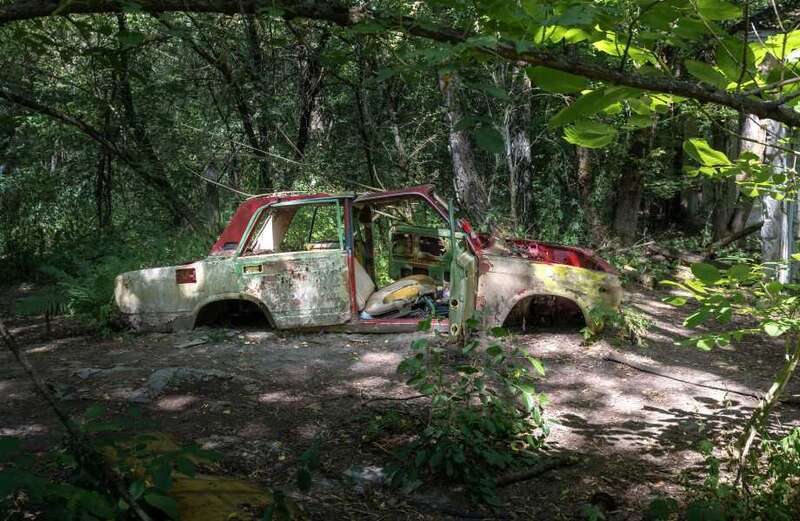TAKE a look inside the world's "most terrifying car graveyard" home to motors too dangerous to TOUCH.
Multiple vehicles were ditched at the boarder of the exclusion zone of the human-free Chernobyl ever since the city's power plant erupted in 1986.





Humans inhabiting the area and the nearby town of Pripyat - built to serve the plant and house workers - were forced to flee when reactor number four exploded.
On news of the disaster, hundreds ditched their cars in case they too were contaminated - with motors still left at the site today.
Fire trucks, ambulance vans, first responder vehicles, and even tanks are left at the scene.
 Stray dogs living in Chernobyl may have evolved to thrive in exclusion zone
Stray dogs living in Chernobyl may have evolved to thrive in exclusion zone
The huge car graveyard has become part of the guided tour through the radioactive grounds.
A 1,000-square-mile zone was cordoned off to prevent harmful exposure to people, and only about 1,000 residents have returned to the exclusion zone, now part of Ukraine, in the nearly four decades since they left.
The wasteland is now home to wild wolves - who have developed a 'superpower' following prolonged exposure to radiation.
Researchers are hoping their discovery of the exceptional genetic mutation could give humans a better chance at surviving cancer.
Pants and animals - including packs of wolves, as well as grizzly bears, bison, and elk - have reclaimed the site of the nuclear disaster, some of which seem unaffected by the high levels of radiation.
New research shows that wolves living in the exclusion zone are genetically different to those living outside of the region.
The April 1986 reactor explosion and fire killed at least 31 and spewed a huge cloud of radioactive particles into the air.
It blew across Europe and rained down over thousands of square miles.
The Chernobyl site is still protected by a large exclusion zone where people can only visit for short periods to avoid high doses of radiation.



 Ukrainians captured defending Chernobyl nuclear plant starving in Russian prison
Ukrainians captured defending Chernobyl nuclear plant starving in Russian prison



































